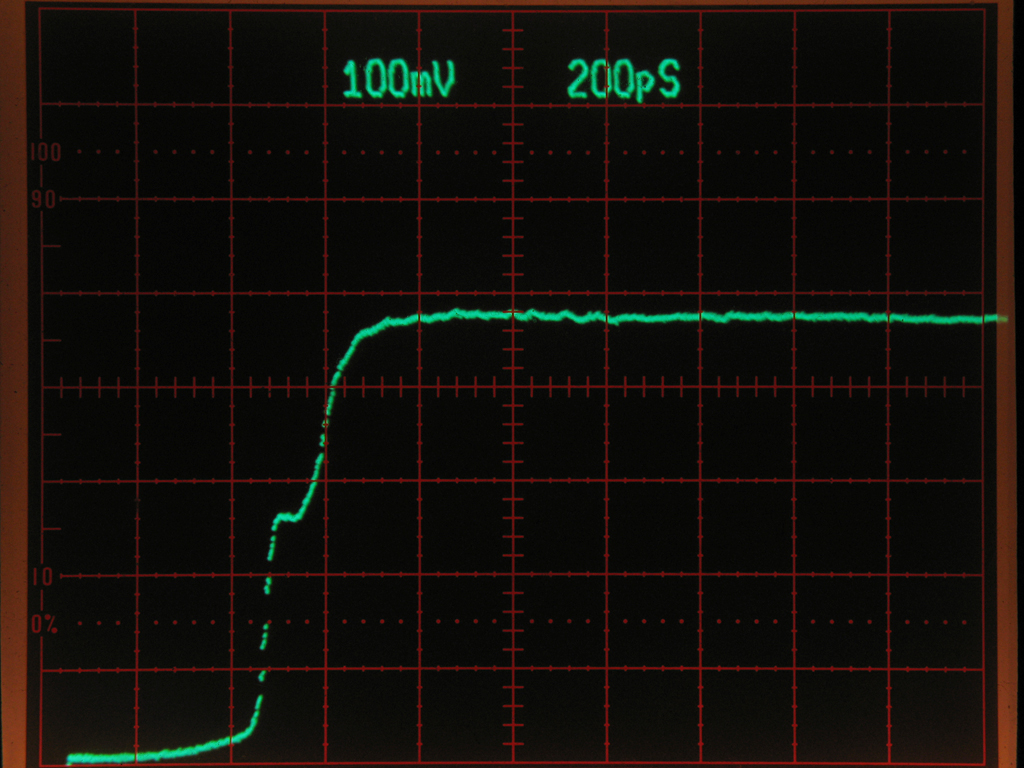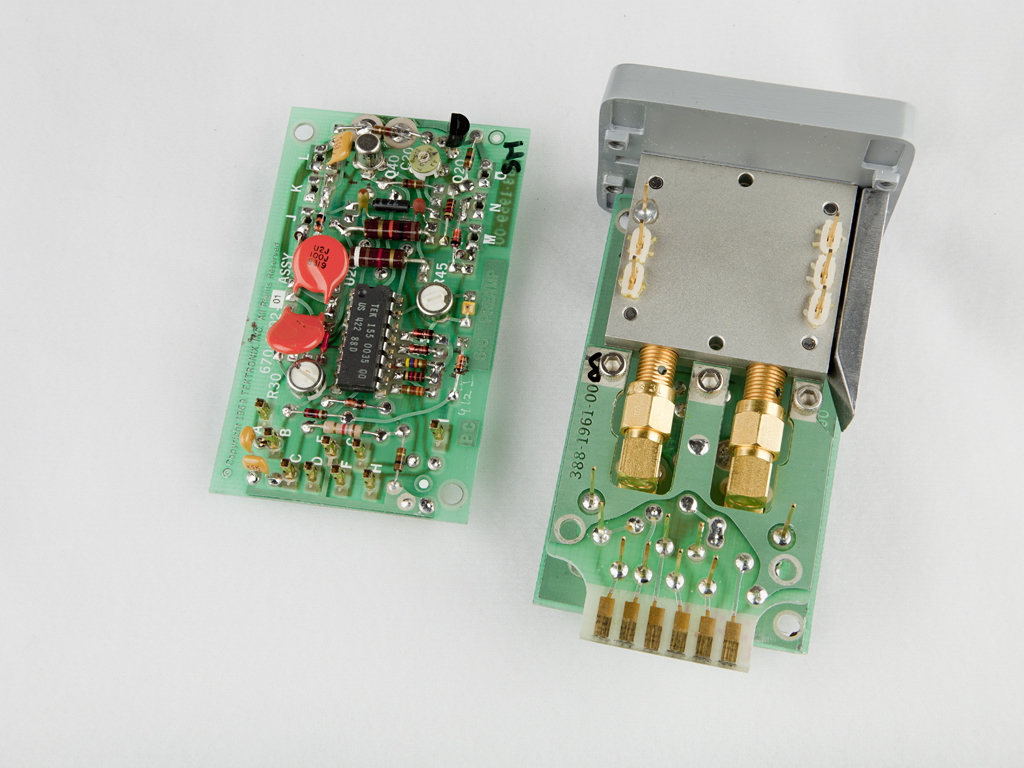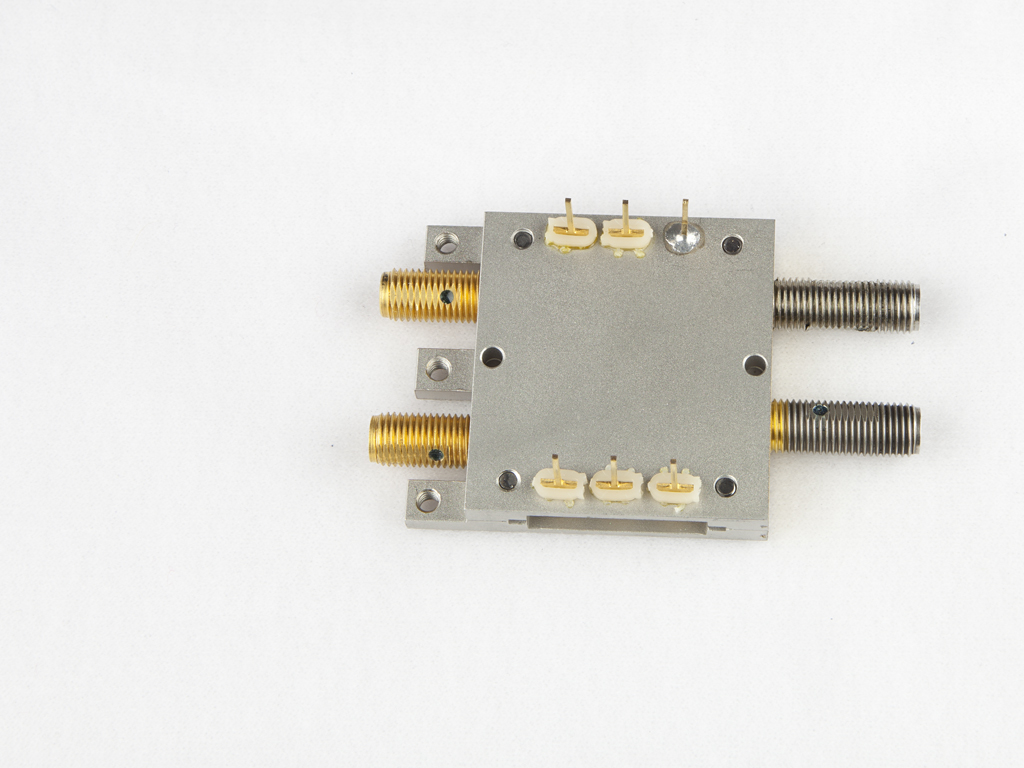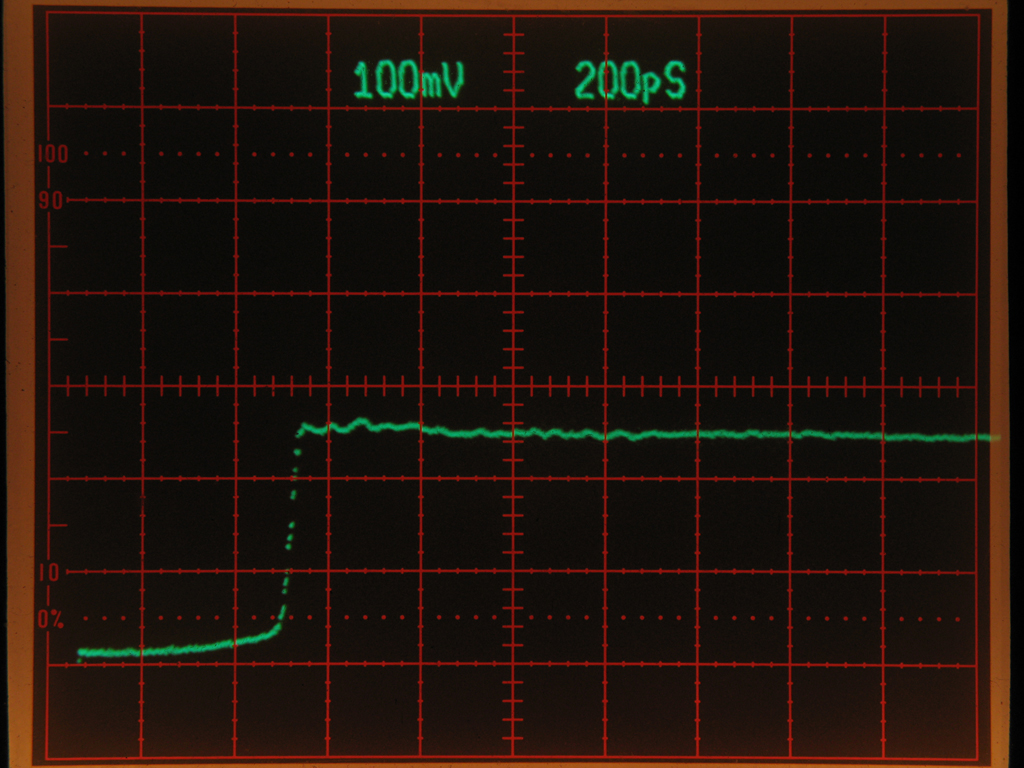Repairing Tektronix S-6 Sampling Head

While making some measurements today, I noticed a strange reflection in the signal generated by my Tektronix 7S12 TDR sampling plugin. At first, it looked like a bad connection at the output of the loop-through S-6 sampling head. However, after further testing, it turned out to be a more serious flaw.
A screenshot above shows the reflection of the step into a terminated S-6. Apparently, the reflection occurs inside the head itself!
I pulled the head out and took it apart. It was fairly easy—after removing three screws on the back, the internals of the head slide forward from the case. The picture above shows the guts of the sampling head with the preamplifier board removed. The square metal box next to the faceplate, with two SMA female connectors sticking out the back, is a hybrid sampling bridge. Based on the distance to the reflection, this is where I needed to look.
Further disassembly was straightforward. First, I removed three socket-head screws along with the board they were securing. Next, I unscrewed both male SMA connectors. Finally, after removing two nuts on the faceplate, the bridge was free of all constraints and could be taken apart.
Luckily, I didn’t need to disassemble the hybrid itself. I discovered that one of the SMA connectors (upper left in the picture) had come loose, so I simply tightened it. I reassembled the head, placed it back into the 7S12, and observed a clean step with sharp corners and no additional reflections (see the picture below).
The whole project took less than an hour, most of it spent taking pictures.
I’m a happy time-domain reflectometrist again, writing this article in the hope it will help someone else. Next time your sampling head starts acting up, don’t rush to eBay for a new one (I checked—they’re out of S-6s at the moment). Take it apart and look inside—you might be able to fix it. In my case, it was more luck than skill, but hey, it worked!


